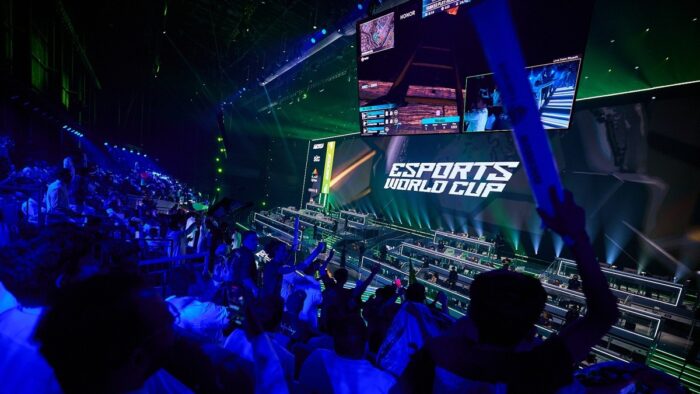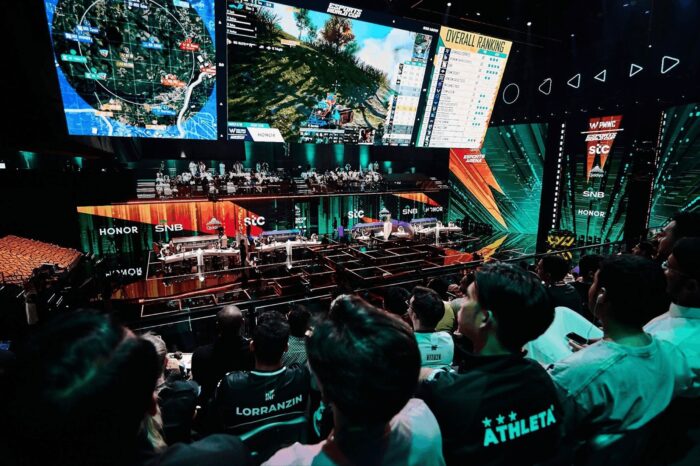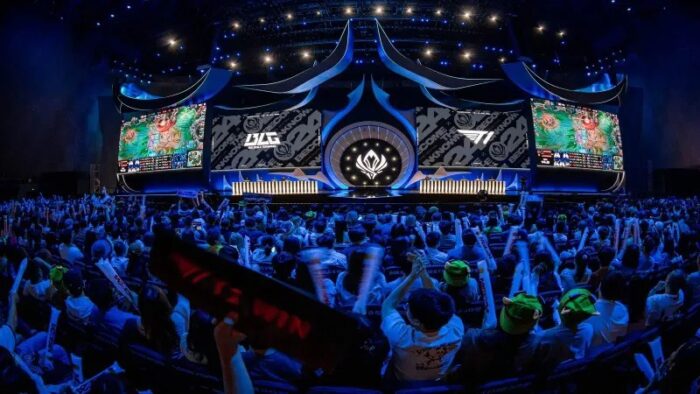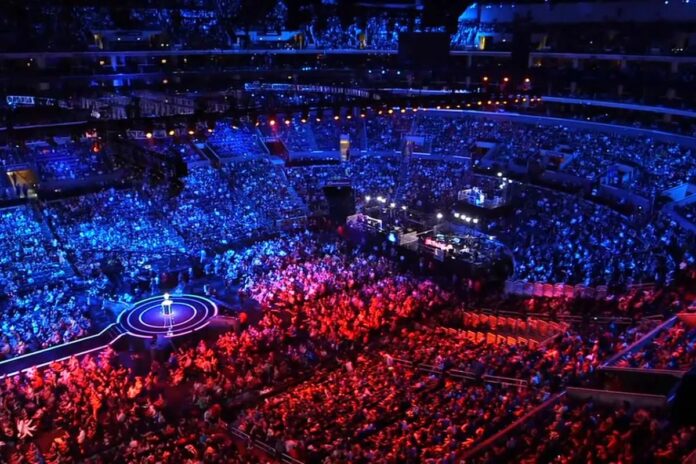Esports in 2025 has moved beyond mere competition; it is now one of the most lucrative entertainment ecosystems on the planet.
While 2020–2022 marked the age of record-breaking online viewership, 2025 is defined by financial maturity and institutional backing.
Prize pools across multiple disciplines, MOBA, tactical shooters, mobile games, and hybrid events, have reached levels once reserved for traditional sports championships.
What separates 2025 from any prior year is the emergence of consolidated mega-events like the Esports World Cup, where the total prize money crosses the $70 million mark.
This single event alone redefines what financial scale looks like in the professional gaming world.
1. Esports World Cup 2025

The Esports World Cup 2025 is the most ambitious and expansive esports festival to date.
Held in Riyadh, Saudi Arabia, it spanned more than seven weeks and featured 25 separate competitions across 24 game titles, plus a Club Championship that evaluated entire organisations across games.
The total prize pool exceeded US $70.45 million, which is now officially the largest in esports history.
This event represents a shifting model for esports: instead of one-title events, major organisers now bundle many games under a single umbrella, giving mobile, console, PC, and even chess titles equal billing.
For fans of tactical-shooter betting or viewing, platforms like CSGOLuck mirror the scale of interest this event generated – even though the Esports World Cup is far larger than any single tournament site.
The Club Championship component deserves special attention. Organisations competed across multiple titles: finishing strongly in two or more games earned points, and the top-ranking club received as much as $7 million alone.
The wider view: for professional players, such an event means not just fame but legitimate income, visibility, and long-term career stakes. For fans and bettors, the breadth means you’re no longer following just one game but an entire ecosystem.
2. The International 2025 (Dota 2)
The International remains the flagship event for the game Dota 2, even as the single-event prize pool has shrunk compared to its peak years.
In 2025, the tournament still represented the pinnacle of competitive Dota, combining global teams, millions of viewers, and intense strategic play.
| Detail | Information |
| Game | Dota 2 |
| Prize Pool | ≈ US $2.88 million |
| Host / Organizer | Valve Corporation |
| Format | Group stage + double elimination playoffs |
While $2.88 million is far lower than the $40 million+ prize pools of past years, the prestige remains. The move away from massive crowdfunding suggests that Valve is refocusing on sustainability rather than headline-grabbing numbers. Teams that win The International still achieve legendary status.
3. Valorant Champions 2025

For the tactical-shooter genre of esports, the competition in Valorant has matured quickly.
Valorant Champions 2025 brought together the best teams from regional leagues in North America, EMEA, and APAC under one roof, with polished production values, storytelling, and a prize pool of US $2.25 million.
| Detail | Information |
| Game | Valorant |
| Prize Pool | US $2.25 million |
| Organiser | Riot Games |
| Regions Represented | NA, EMEA, APAC |
The tangible growth of Valorant esports underscores how first-person tactical shooters still attract large organiser investment, audience interest, and fan engagement. It’s a game where reflexes, tactics, and teamwork converge, and where a strong performance can elevate a team’s brand.
4. Esports World Cup – League of Legends Division 2025
Within the mega-festival of the Esports World Cup, the League of Legends (LoL) segment stood out. LoL has been the cornerstone of global PC esports for years, and integrating it into a broader multi-title festival allowed fans to see a familiar game in a fresh context.
| Detail | Information |
| Game | League of Legends |
| Prize Pool | US $2.0 million |
| Venue | STC Esports Arena, Riyadh |
| Format | 12 teams, group stage + playoffs |
This $2.0 million pool may not rival the largest by game title alone, but the symbolism is potent: LoL being part of a mega-ecosystem rather than a standalone series reflects how publishers are diversifying. For fans, it means watching their favourite game side-by-side with mobile titles and even chess.
5. PUBG Mobile World Cup 2025

Mobile esports continue their explosive rise. The PUBG Mobile World Cup (PMWC) 2025 drew 24 international teams, took place in Riyadh, and offered a prize pool of US $3.05 million according to Liquipedia.
| Detail | Information |
| Game | PUBG Mobile |
| Prize Pool | ≈ US $3.05 million |
| Teams | 24 teams from multiple nations |
| Venue | Riyadh, Saudi Arabia |
The significance here is two-fold. First, mobile titles are no longer “secondary” in esports: their prize pools and global reach are competitive. Second, the infrastructure to host such large-scale mobile tournaments globally has matured. For anyone tracking the esports landscape or looking into betting or viewing options on platforms like CSGOLuck, mobile tournaments are increasingly relevant.
6. MLBB Mid-Season Cup 2025 (Mobile Legends: Bang Bang)
In Southeast Asia, the mobile Multiplayer Online Battle Arena (MOBA) title Mobile Legends: Bang Bang is enormously popular.
The Mid-Season Cup 2025 featured a prize pool of US$3.0 million and showcased how mobile MOBA esports can draw serious investment and viewership.
| Detail | Information |
| Game | Mobile Legends: Bang Bang |
| Prize Pool | US $3.0 million |
| Dominant Regions | Philippines, Indonesia |
| Format | 23 teams, regional qualifiers + finals |
The human factor here: players in Southeast Asia often juggle local tournaments, livestreaming, and brand partnerships.
The visibility of MLBB and the prize pool validate their careers. For global watchers, it’s a reminder that esports success is not just Western-centric.
ChatGPT said:
7. First Stand Tournament 2025

The First Stand Tournament 2025 marked Riot Games’ boldest experiment yet, a crossover between esports, entertainment, and live media.
Rather than sticking to pure professional rosters, Riot introduced mixed teams made up of elite pros, retired legends, and top-tier streamers.
With a $1 million prize pool, this event wasn’t just about victory; it was designed to celebrate the personality-driven side of competitive gaming.
| Detail | Information |
| Game | League of Legends |
| Prize Pool | US $1 million |
| Organizer | Riot Games |
| Location | Los Angeles, California |
| Unique Feature | Mixed teams (pros + streamers) with fan voting for matchups |
The format was revolutionary. Inst
ead of the standard group-stage grind, the event revolved around fan engagement. Spectators could vote on which influencer or retired pro would join each lineup, shaping the tournament’s narrative in real time.
Riot’s production design mirrored major entertainment awards, complete with red-carpet segments, interviews, and behind-the-scenes segments that highlighted team chemistry and rivalry.

